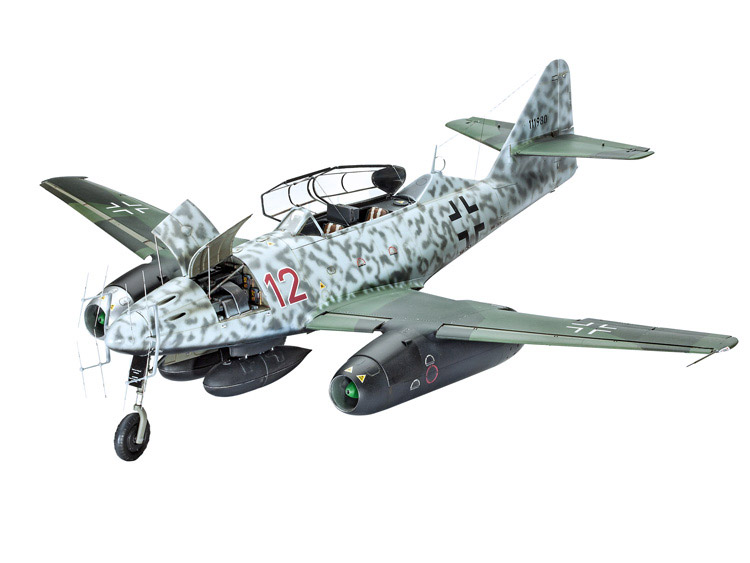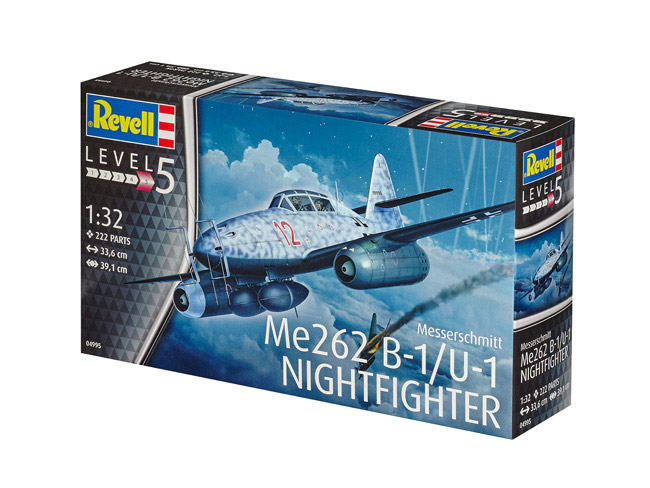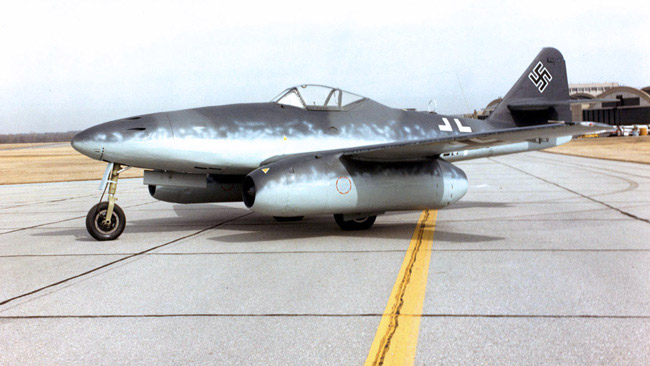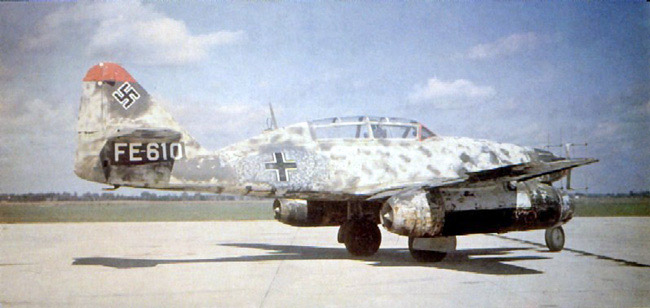Overall then
For me… this is a very good looking kit that captures the shape of the type well. It is very well detailed and at the offer price is excellent value for money.
You have a simple choice, assuming that you can get hold of the Trumpeter offering and I’m excited to see this one built so that we can make a true comparison with that kit. This new Revell kit will provide hours of scale modelling and clearly makes up into a very good representation of the me262B-1/U1 looking at that manufacturer’s model.

I’d love to have been able to build this one myself only I’m committed to 3 other builds now ahead of when I could get to it and that’s why Chris E has stepped in.
Finally, I’ve added some background info on the Me262 below and you’ll also find my summary immediately below.
Geoff C.
SMN Quick summary Star rating out of 5

A little bit of background to the Messerschmitt 262…
The Messerschmitt Me 262, nicknamed Schwalbe (German: “Swallow”) in fighter versions, or Sturmvogel (German: “Storm Bird”) in fighter-bomber versions, was the world’s first operational jet-powered fighter aircraft. Design work started before World War II began, but problems with engines, metallurgy and top-level interference kept the aircraft from operational status with the Luftwaffe until mid-1944. The Me 262 was faster and more heavily armed than any Allied fighter, including the British jet-powered Gloster Meteor. One of the most advanced aviation designs in operational use during World War II, the Me 262’s roles included light bomber, reconnaissance and experimental night fighter versions.

While German use of the aircraft ended with the close of World War II, a small number were operated by the Czechoslovak Air Force until 1951. Captured Me 262s were studied and flight tested by the major powers, and ultimately influenced the designs of a number of post-war aircraft such as the North American F-86 Sabre and Boeing B-47 Stratojet. A number of aircraft survive on static display in museums, and there are several privately built flying reproductions that use modern General Electric J85 engines.

The B-1a
Several two-seat trainer variants of the Me 262, the Me 262 B-1a, had been adapted through the Umrüst-Bausatz 1 factory refit package as night fighters, complete with on-board FuG 218 Neptun high-VHF band radar, using Hirschgeweih (“stag’s antlers”) antennae with a set of dipole elements shorter than the Lichtenstein SN-2 had used, as the B-1a/U1 version. Serving with 10. Staffel Nachtjagdgeschwader 11, near Berlin, these few aircraft (alongside several single-seat examples) accounted for most of the 13 Mosquitoes lost over Berlin in the first three months of 1945. However, actual intercepts were generally or entirely made using Wilde Sau methods, rather than AI radar-controlled interception. As the two-seat trainer was largely unavailable, many pilots made their first jet flight in a single-seater without an instructor.
Despite its deficiencies, the Me 262 clearly marked the beginning of the end of piston-engined aircraft as effective fighting machines. Once airborne, it could accelerate to speeds over 850 km/h (530 mph), about 150 km/h (93 mph) faster than any Allied fighter operational in the European Theatre of Operations.
The Me 262’s top ace was probably Hauptmann Franz Schall with 17 kills, including six four-engine bombers and 10 P-51 Mustang fighters, although night fighter ace Oberleutnant Kurt Welter claimed 25 Mosquitos and two four-engine bombers shot down by night and two further Mosquitos by day. Most of Welter’s claimed night kills were achieved by eye, even though Welter had tested a prototype Me 262 fitted with FuG 218 Neptun radar. Another candidate for top ace on the aircraft was Oberstleutnant Heinrich Bär, who claimed 16 enemy aircraft.